Key Differences Between Carpenters and Great Lead Carpenters: Part 2
 As I pointed out in part one of this article skilled carpenters are assumed to have the trade skills needed to do the work at hand and to understand construction. But just because a carpenter has these skills doesn’t necessarily also mean he or she has the rest of what it takes to be a successful Lead Carpenter. In the first article I listed the basic skills and thinking skills a carpenter must possess to be eligible to become a Lead Carpenter. Below is the second half of a list of key skills a carpenter should have or will need to acquire to become a great Lead Carpenter. We will be covering these topics and others at our Lead Carpenter System Workshop for business owners coming this summer.
As I pointed out in part one of this article skilled carpenters are assumed to have the trade skills needed to do the work at hand and to understand construction. But just because a carpenter has these skills doesn’t necessarily also mean he or she has the rest of what it takes to be a successful Lead Carpenter. In the first article I listed the basic skills and thinking skills a carpenter must possess to be eligible to become a Lead Carpenter. Below is the second half of a list of key skills a carpenter should have or will need to acquire to become a great Lead Carpenter. We will be covering these topics and others at our Lead Carpenter System Workshop for business owners coming this summer.
This second list describes the people skills and personal qualities a carpenter must possess before becoming a great Lead Carpenter. These are skills that can be learned and mastered while working as a carpenter. Training, supervision, mentoring and coaching by the business owner and or other leaders in the business can help the right carpenters acquire these very important skills. Before investing in a carpenter in these areas make sure your Lead Carpenter to be has the demonstrated cognitive ability and willingness to learn and apply such skills.
People Skills needed to be a Lead Carpenter
- Social: Has a natural ability to show understanding, friendliness, and respect for the feelings of others, but at the same time is able to assert oneself when appropriate. Also takes genuine interest in what people say and why they think and act the way they do.
- Negotiation: Ability to assess and identify common goals among different parties and at the same time clearly present their and the company’s position. Can also examine possible options and make reasonable compromises.

- Leadership: Can appropriately communicate thoughts and feelings to justify a position. Can also encourage or convince while making positive use of rules or values. Demonstrates the ability to have others believe in and trust in them because of demonstrated competence and honesty.
- Teamwork: Contributes to the team offering ideas and effort, but also does his or her share of the work to be done. Has the ability to encourage other team members and can resolve differences for the benefit of the team. At the same time can responsibly and appropriately challenge existing procedures, policies, or authorities for constructive purposes.
- Cultural Diversity: Works well with people having different ethnic, social, or educational backgrounds and understands the cultural differences of different groups. Can also help the people in different groups make and embrace cultural adjustments when necessary.
 Personal qualities needed to be a Lead Carpenter
Personal qualities needed to be a Lead Carpenter
- Self-Esteem: Understands how beliefs affect how others feel and act. Can identify irrational or harmful beliefs they may have and understand how to change and or adjust them when needed.
- Self-Management: Honestly assesses his or her knowledge and skills accurately. Proactively sets specific and realistic personal as well as professional goals and can self monitor progress toward those goals.
- Responsibility: Works hard to reach goals, even if the task is unpleasant. Will consistently do quality work and maintains a high standard of attendance, honesty, energy, and optimism.
Click here to see a Job Description for a Lead carpenter
Click here to read part one of this article
Other articles to help contractors and construction business owners choose and grow the right carpenters into Lead Carpenters
Helping Lead Carpenters Become Managers Benefits Them and The Business
Is He Or She Really A Lead Carpenter? Probably Not!
Interesting Considerations For Putting The Right Employee On The Right Job
Getting Employees to Think Like Owners



 Skilled Carpenters are assumed to have the trade skills needed to do the work at hand and to understand construction. But just because a carpenter has these skills doesn’t necessarily also mean he or she has the rest of what it takes to be a successful Lead Carpenter. Below is the first half of a list of key skills a carpenter should have or will need to acquire to become a great Lead Carpenter. I created this list to help carpenters and construction business owners improve their chances of success developing Lead Carpenters and a true Lead Carpenter System.
Skilled Carpenters are assumed to have the trade skills needed to do the work at hand and to understand construction. But just because a carpenter has these skills doesn’t necessarily also mean he or she has the rest of what it takes to be a successful Lead Carpenter. Below is the first half of a list of key skills a carpenter should have or will need to acquire to become a great Lead Carpenter. I created this list to help carpenters and construction business owners improve their chances of success developing Lead Carpenters and a true Lead Carpenter System. 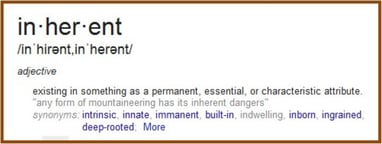
 Speaking: Ability to speak clearly including selecting language, tone of voice, and gestures appropriate to a specific audience.
Speaking: Ability to speak clearly including selecting language, tone of voice, and gestures appropriate to a specific audience.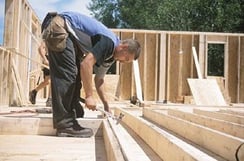 Creative Thinking: Has the ability and is not afraid to use imagination freely to combine ideas or information in new ways. Can easily make connections between ideas that seem unrelated to others.
Creative Thinking: Has the ability and is not afraid to use imagination freely to combine ideas or information in new ways. Can easily make connections between ideas that seem unrelated to others. The plaque below is for every contractor and construction business owner who has built their business from the ground up. Only those who have done it know what it takes and have experienced the joys, challenges and pride that come with small business ownership. This 4th of July be sure to once again recognize and celebrate the rights we have as Americans to stand erect and proud of our personal accomplishments.
The plaque below is for every contractor and construction business owner who has built their business from the ground up. Only those who have done it know what it takes and have experienced the joys, challenges and pride that come with small business ownership. This 4th of July be sure to once again recognize and celebrate the rights we have as Americans to stand erect and proud of our personal accomplishments. 
 One of the very important things that hands-on contractors who seek to become construction business owners need to get ready for is bringing on sales staff to help the owner sell an adequate volume of work as the business grows. Below is a 10 item checklist contractors can use to help them get ready for this critical step in the growth of their businesses. From my own experience of hiring my first remodeling salesperson many years ago number 10 is the most important.
One of the very important things that hands-on contractors who seek to become construction business owners need to get ready for is bringing on sales staff to help the owner sell an adequate volume of work as the business grows. Below is a 10 item checklist contractors can use to help them get ready for this critical step in the growth of their businesses. From my own experience of hiring my first remodeling salesperson many years ago number 10 is the most important. Establish Sales Goals and a Performance Based Compensation Strategy you can share with candidates as you interview them and your business will use once they are hired.
Establish Sales Goals and a Performance Based Compensation Strategy you can share with candidates as you interview them and your business will use once they are hired. If you are still running free estimates and playing a numbers game of leads to appointments to sales then I have something valuable to share. In the past I believed that if I did not actively pursue new clients, and provide free estimates, I would have no income. It was a numbers game; 5 leads - 3 appointments -1 sale. Sound familiar? In this article I share my lesson in letting go; finding the faith to trust a system to qualify prospects, and the positive impact it can make for your business as well as your cash flow.
If you are still running free estimates and playing a numbers game of leads to appointments to sales then I have something valuable to share. In the past I believed that if I did not actively pursue new clients, and provide free estimates, I would have no income. It was a numbers game; 5 leads - 3 appointments -1 sale. Sound familiar? In this article I share my lesson in letting go; finding the faith to trust a system to qualify prospects, and the positive impact it can make for your business as well as your cash flow. As a result of that temporary relationship I learned how to create a trained support staff at my own business and secured steady work for my team. By learning how to use and sell paid consultations our leads turned into project development retainers which then turned into profitable construction contracts. That temporary relationship was also a big success for the partnering firm; they had a record earning year and made a lot of money.
As a result of that temporary relationship I learned how to create a trained support staff at my own business and secured steady work for my team. By learning how to use and sell paid consultations our leads turned into project development retainers which then turned into profitable construction contracts. That temporary relationship was also a big success for the partnering firm; they had a record earning year and made a lot of money. I no longer run around from appointment to appointment. I now have the time to focus on creating more ways to provide paying prospects with value early in the process. Our business is running with more consistency and cash flow has increased. For every consultation I go on now we have a 70% close rate to a full construction contract, a 20% conversion to a design/material contract and about 10% of our prospects don’t move forward.
I no longer run around from appointment to appointment. I now have the time to focus on creating more ways to provide paying prospects with value early in the process. Our business is running with more consistency and cash flow has increased. For every consultation I go on now we have a 70% close rate to a full construction contract, a 20% conversion to a design/material contract and about 10% of our prospects don’t move forward.  Guest Blogger: Cynthia Murphy, CKBR, is a Certified Kitchen and Bath Remodeler and co-owner of
Guest Blogger: Cynthia Murphy, CKBR, is a Certified Kitchen and Bath Remodeler and co-owner of  Many remodelers determine their pricing structure by copying what other businesses do rather than figure out what markup their business actually needs to use. Comparing or copying markups or margins is pointless and very risky without knowing how they were determined. The decision about what costs or expenses go above or below the gross profit line can be different at different remodeling companies. Therefore the markup each company will need to use to cover overhead costs and planned net profit will be different. Let me explain and clarify.
Many remodelers determine their pricing structure by copying what other businesses do rather than figure out what markup their business actually needs to use. Comparing or copying markups or margins is pointless and very risky without knowing how they were determined. The decision about what costs or expenses go above or below the gross profit line can be different at different remodeling companies. Therefore the markup each company will need to use to cover overhead costs and planned net profit will be different. Let me explain and clarify.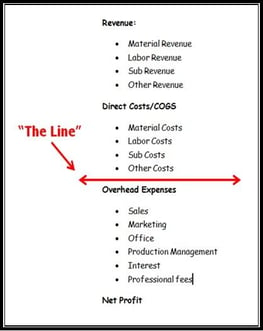 First, here are the terms you need to know
First, here are the terms you need to know It also important to know that fewer than 20% of remodelers actually know the true costs of being in business. That means that 80% or more are using what has been referred to as the WAG or “Wild Ass Guess” method when it comes to deciding what markup they use to price the projects they sell. I call that
It also important to know that fewer than 20% of remodelers actually know the true costs of being in business. That means that 80% or more are using what has been referred to as the WAG or “Wild Ass Guess” method when it comes to deciding what markup they use to price the projects they sell. I call that  So, what about you and your business?
So, what about you and your business? When it comes to your remodeling business, you want to be the best and stand leagues above your competition. But in a crowded field, this can be tough to do. Your customers expect professionalism and a job well done, which is what most of your peers are aiming to deliver as well. So if you’re seeking that extra edge with your business, you need to also do this – and then some. One of the best ways to impress your customers is by staying abreast of industry trends, and the newest innovations that can save them money and improve their results. Here are a couple of the ones worth watching, in commercial and residential remodeling, along with some tips for keeping yourself in the loop.
When it comes to your remodeling business, you want to be the best and stand leagues above your competition. But in a crowded field, this can be tough to do. Your customers expect professionalism and a job well done, which is what most of your peers are aiming to deliver as well. So if you’re seeking that extra edge with your business, you need to also do this – and then some. One of the best ways to impress your customers is by staying abreast of industry trends, and the newest innovations that can save them money and improve their results. Here are a couple of the ones worth watching, in commercial and residential remodeling, along with some tips for keeping yourself in the loop. Just as marketing techniques have all been swept up in the concept of personalization recently, remodeling is not exempt from this trend. In fact, it’s arguable that being adaptable to your customers’ wish lists is the only way you’ll succeed. You might be thinking – wait, isn’t the practice of remodeling personalized already? Yes and no. Yes, because when you remodel a home, you renovate the areas your customer has specified. But it’s not extensively personalized, since many remodeling companies don’t take it a step further and find out how to tailor every bit of construction to the customers’ wants.
Just as marketing techniques have all been swept up in the concept of personalization recently, remodeling is not exempt from this trend. In fact, it’s arguable that being adaptable to your customers’ wish lists is the only way you’ll succeed. You might be thinking – wait, isn’t the practice of remodeling personalized already? Yes and no. Yes, because when you remodel a home, you renovate the areas your customer has specified. But it’s not extensively personalized, since many remodeling companies don’t take it a step further and find out how to tailor every bit of construction to the customers’ wants. Guest Blogger: Rebecca Hasulak is a prolific writer and dangerous dreamer. She sharpened her skill with the written word while she was an Associate Editor of a beauty and pop culture magazine, and further during her time as a Public Relations Executive. Rebecca now writes and delivers PR services under her business Quotable PR, and is happiest when with her daughter and loved ones. Follow her @BecksChristine.
Guest Blogger: Rebecca Hasulak is a prolific writer and dangerous dreamer. She sharpened her skill with the written word while she was an Associate Editor of a beauty and pop culture magazine, and further during her time as a Public Relations Executive. Rebecca now writes and delivers PR services under her business Quotable PR, and is happiest when with her daughter and loved ones. Follow her @BecksChristine. On April 2nd, 2015 I presented a half day marketing workshop titled "Choosing and Targeting the Right Customers and Projects Types for Your Business". The workshop was billed as the keynote session for the
On April 2nd, 2015 I presented a half day marketing workshop titled "Choosing and Targeting the Right Customers and Projects Types for Your Business". The workshop was billed as the keynote session for the 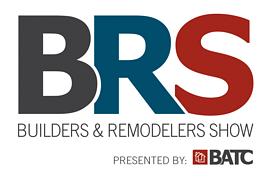 Take advantage of the timing
Take advantage of the timing  Stop taking just any customers and jobs. Be selective about who you will let become your customers. For example why not only work with people who would say they are "working with" you, not those who would say you are "working for them". Also, be selective about the project types you go after. For example why not attract people who want high quality products. If you sell using one markup across all cost categories the gross profit dollars earned on material intensive projects due to higher price point products is an easier way to meet overhead and net profit goals, both now and in the future, particularly when compared to selling and producing labor intensive projects.
Stop taking just any customers and jobs. Be selective about who you will let become your customers. For example why not only work with people who would say they are "working with" you, not those who would say you are "working for them". Also, be selective about the project types you go after. For example why not attract people who want high quality products. If you sell using one markup across all cost categories the gross profit dollars earned on material intensive projects due to higher price point products is an easier way to meet overhead and net profit goals, both now and in the future, particularly when compared to selling and producing labor intensive projects. The old traditional marketing methods of trying to find prospects who want your services now and interrupting them to get their attention no longer work. Today consumers are the ones deciding how they will find and qualify their project ideas as well as the contractor they will work with. Instead use inbound marketing tactics that help consumers find your business. This should be one of the two primary purposes of your marketing and can be accomplished on your web site using SEO tactics and good content on your site’s pages as well as your blog. The other primary purpose of your marketing, particularly at your web site, should be to help prospects decide if what you offer and how you do business are right for them. In other words your marketing should help them prequalify themselves so they either want to contact you or know they shouldn't.
The old traditional marketing methods of trying to find prospects who want your services now and interrupting them to get their attention no longer work. Today consumers are the ones deciding how they will find and qualify their project ideas as well as the contractor they will work with. Instead use inbound marketing tactics that help consumers find your business. This should be one of the two primary purposes of your marketing and can be accomplished on your web site using SEO tactics and good content on your site’s pages as well as your blog. The other primary purpose of your marketing, particularly at your web site, should be to help prospects decide if what you offer and how you do business are right for them. In other words your marketing should help them prequalify themselves so they either want to contact you or know they shouldn't. My Local NARI Chapter, Eastern MA NARI, will be hosting Professional Remodeler Magazine’s Leadership Tour this Wednesday night in Natick MA at the VERVE Crowne Plaza Hotel. Always a good event with great food, this year’s tour is under the new leadership of Sal Alfano, the magazine’s new Editorial Director. Below are the three reasons I’ll be going again this year. I hope you will join me Wednesday night.
My Local NARI Chapter, Eastern MA NARI, will be hosting Professional Remodeler Magazine’s Leadership Tour this Wednesday night in Natick MA at the VERVE Crowne Plaza Hotel. Always a good event with great food, this year’s tour is under the new leadership of Sal Alfano, the magazine’s new Editorial Director. Below are the three reasons I’ll be going again this year. I hope you will join me Wednesday night.

 As you grow your business day to day management and leadership considerations can quickly creep up on construction business owners. Profitably growing a remodeling business to any volume, but in particular growing past the $1M threshold in produced work, definitely requires advanced business skills. Growing and running your business by the seat of your pants is a sure way to create a mediocre business that will never generate maximum profits. This article offers several ways business owners can determine if they and their businesses are headed for mediocrity. It also offers options to help you and your business get back on track.
As you grow your business day to day management and leadership considerations can quickly creep up on construction business owners. Profitably growing a remodeling business to any volume, but in particular growing past the $1M threshold in produced work, definitely requires advanced business skills. Growing and running your business by the seat of your pants is a sure way to create a mediocre business that will never generate maximum profits. This article offers several ways business owners can determine if they and their businesses are headed for mediocrity. It also offers options to help you and your business get back on track.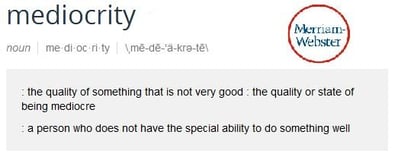
 The first is to let them keep happening. If you allow things to continue you will likely lose customers, compromise your brand, have high employee turnover and you will never fully achieve creating a successful and profitable business. Eventually, when your family and others ask you why you never really succeeded in business, you will again have to resort to rationalizing why it was someone else's fault.
The first is to let them keep happening. If you allow things to continue you will likely lose customers, compromise your brand, have high employee turnover and you will never fully achieve creating a successful and profitable business. Eventually, when your family and others ask you why you never really succeeded in business, you will again have to resort to rationalizing why it was someone else's fault.





